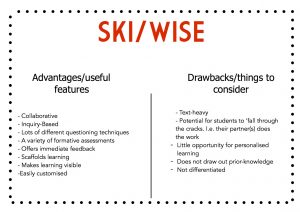WISE was created in the 90’s as a way to bring a new way of learning to the classroom by taking advantage of new technological advances and the internet (Slotta & Linn, 2009). Using the SKI framework, WISE projects are developed to be inquiry-based and have a number of different elements that are consistent with the constructivist learning theory. Projects are designed to be collaborative, use various features that appeal to a wide range of learners, use open-ended questioning techniques, as well as incorporate useful tools to help make students thinking visible.
Like the Jaspers materials, WISE encourages students to work together, and its contents are accessible to all learners. Some questions are open-ended, and there are attempts to make the material applicable to real life. WISE projects are more extensive, however, and students are gaining and applying knowledge as they move through them. The Jaspers videos are used for students to apply and practice concepts previously learned (Linn et al., 2003).
I would use WISE projects alongside classrooms instruction and projects. I found the materials to be very text heavy and a lot of material for students to go through on their own. In my context with EAL learners, I would want to make sure that students had a good understanding of what the vocabulary was before going through the activities. It would also be ideal for students to be involved in a hands-on experiment or project alongside the material as a way to reinforce the concepts learned. Including more videos within the online activities would also be helpful as a way to reduce the amount of reading. Finally, I would add having tuning in activities and pre-assessments that activate prior-knowledge, draw out misconceptions and also encourage students to ask relevant questions.
I created this table after reading posts from others and considering other perspectives.

Linn, M. C., Clark, D., & Slotta, J. D. (2003). WISE design for knowledge integration. Science education, 87(4), 517-538.
Slotta, J. D., & Linn, M. C. (2009). WISE science: Web-based inquiry in the classroom. Teachers College Press.